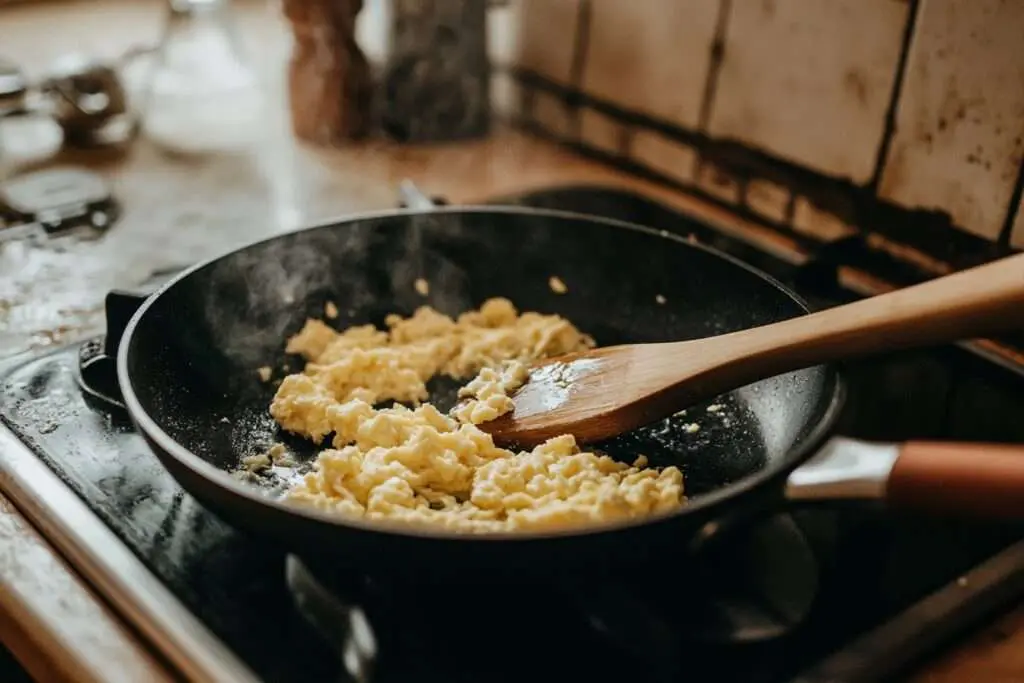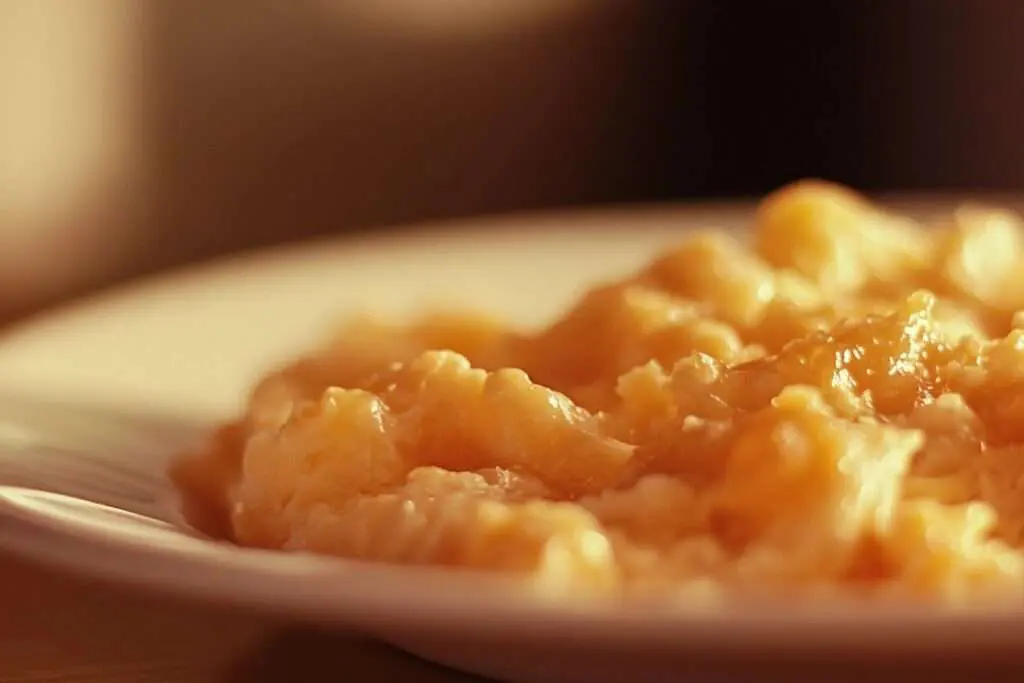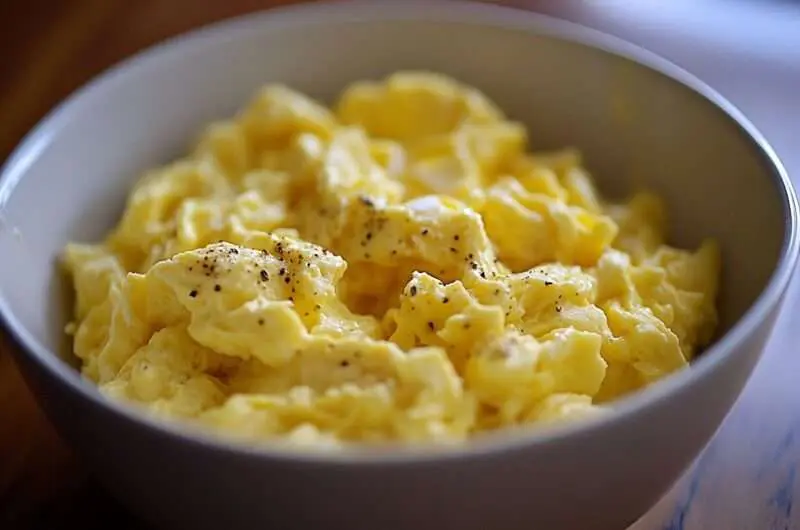Making perfect scrambled eggs might seem simple, but achieving that coveted fluffy texture can be tricky. While many home cooks reach for milk or cream, there’s a surprising secret ingredient that professional chefs swear by – plain water. This simple addition transforms ordinary scrambled eggs into an airy, cloud-like breakfast worthy of a weekend brunch spot.
The science behind adding water to eggs

When you add a small splash of water to your eggs, something magical happens during cooking. The water creates steam, which gets trapped within the proteins of the eggs, resulting in a lighter, fluffier texture. For optimal results, add approximately 1-1.5 teaspoons of water per large egg.
Think about what happens when you steam vegetables versus boiling them – steam creates a gentler cooking environment that preserves texture. The same principle applies to eggs. As the water heats up, it forms tiny pockets of steam throughout the eggs, creating a soufflé-like effect without any fancy techniques.
Common mistakes when adding water to eggs
The most frequent error is using too much water. Remember, we’re not making egg soup! A small splash is all you need – about 1-1.5 teaspoons per egg. Adding too much liquid will dilute the egg’s natural richness and create a watery mess instead of fluffy clouds.
Another mistake is adding the water directly to the pan instead of whisking it with the raw eggs. Combining the water with your eggs before cooking ensures even distribution and proper steam development throughout the cooking process.
Perfect technique for water-enhanced scrambled eggs

Start with room temperature eggs for the best results. Crack them into a bowl and add your measured water. Whisk vigorously until the eggs and water are fully incorporated and slightly frothy. This pre-cooking step is crucial for achieving that perfect fluffy texture.
Heat your non-stick pan over medium-low heat. When the pan is warm, add a pat of butter and let it melt completely. Pour in your egg mixture and wait for the edges to start setting before using a spatula to gently push the eggs from the edges to the center.
Alternative methods worth trying
While water is the secret ingredient for fluffy eggs, some cooks prefer using seltzer water instead of still water. The carbonation creates additional air bubbles, potentially making the eggs even lighter. However, the difference is subtle, and regular tap water works perfectly fine.
For those who prefer dairy, you can still achieve great results with milk or cream, but try reducing the amount to just a splash. Many professional kitchens have switched to the water method because it creates the same fluffy texture without diluting the egg’s natural flavor.
Why temperature matters when adding water

The temperature of both your pan and the water can impact your results. Room temperature water blends more easily with the eggs and creates more consistent steam during cooking. Cold water can slow down the cooking process and result in uneven texture.
When cooking, maintain a medium-low heat throughout the process. High heat causes the water to evaporate too quickly, defeating the purpose of adding it in the first place. The goal is to create a gentle, steady stream of steam as the eggs cook.
This simple water technique revolutionizes ordinary scrambled eggs into something special. Remember that perfect scrambled eggs should look slightly glossy when they’re done, and they’ll continue cooking for a few moments after leaving the pan. With practice, you’ll master this method and never look back at your old scrambling ways.
The Fluffiest Scrambled Eggs
Course: BreakfastCuisine: American4
servings30
minutes40
minutes300
kcalDiscover the secret to cloud-like scrambled eggs with this simple water technique that professional chefs swear by.
Ingredients
4 large eggs, room temperature
2 teaspoons water
1 tablespoon unsalted butter
1/4 teaspoon kosher salt
1/8 teaspoon freshly ground black pepper
Directions
- Break the eggs into a medium bowl. Add the water, salt, and pepper. Whisk vigorously until the mixture is completely uniform and slightly frothy. The vigorous whisking incorporates air which helps create a fluffier texture.
- Heat a non-stick pan over medium-low heat. Add the butter and swirl to coat the bottom of the pan completely. Wait until the butter stops foaming but hasn’t browned.
- Pour the egg mixture into the pan. Wait about 30 seconds until the edges begin to set. Using a rubber spatula, gently push the eggs from the edges toward the center of the pan, tilting to allow uncooked egg to flow to the edges.
- Continue this gentle pushing motion, allowing uncooked eggs to flow to empty spaces. The key is to be patient and keep the heat medium-low. This allows the water to create steam and develop those coveted fluffy curds.
- When the eggs are about 90% set but still look slightly wet on top, remove the pan from heat. The residual heat will finish cooking the eggs while keeping them moist and fluffy.
Notes
- Eggs should be at room temperature for best results. If using straight from the fridge, let them sit in warm water for 5 minutes.
- Don’t add more than 1/2 teaspoon water per egg, or you’ll end up with watery eggs.
- Never salt eggs before whisking as this can make them watery.
- If adding cheese or herbs, do so when eggs are about 75% done to prevent overcooking.
Frequently Asked Questions
Q: Why use water instead of milk or cream in scrambled eggs?
A: Water creates steam during cooking, which results in fluffier eggs. Unlike dairy products, water evaporates completely, leaving behind light, airy curds without diluting the egg’s natural flavor. The steam effect helps create larger bubbles within the eggs, leading to a more soufflé-like texture.
Q: Can I make these eggs ahead of time?
A: While scrambled eggs are best served fresh, you can store them in an airtight container in the refrigerator for up to 24 hours. To reheat, place them in a microwave-safe dish and heat in 20-second intervals, stirring between each interval to prevent overcooking. Add a tiny bit of butter if they seem dry.
Q: My eggs are turning out watery. What am I doing wrong?
A: If your scrambled eggs are watery, you’re likely using too much water or cooking them at too high a temperature. Stick to about 1/2 teaspoon of water per egg, and make sure to cook them over medium-low heat. Also, ensure you’re not oversalting the eggs before cooking, as this can draw out moisture.
Q: Can I use this water technique with egg whites only?
A: Yes, this technique works with egg whites as well. Use about 1/4 teaspoon of water per egg white and follow the same cooking method. Keep in mind that egg whites will cook faster than whole eggs, so watch them carefully to prevent overcooking.



